"SECRET" Marked September 1918 - Trench Map - Battle of the Hills - Third Battle of Champagne

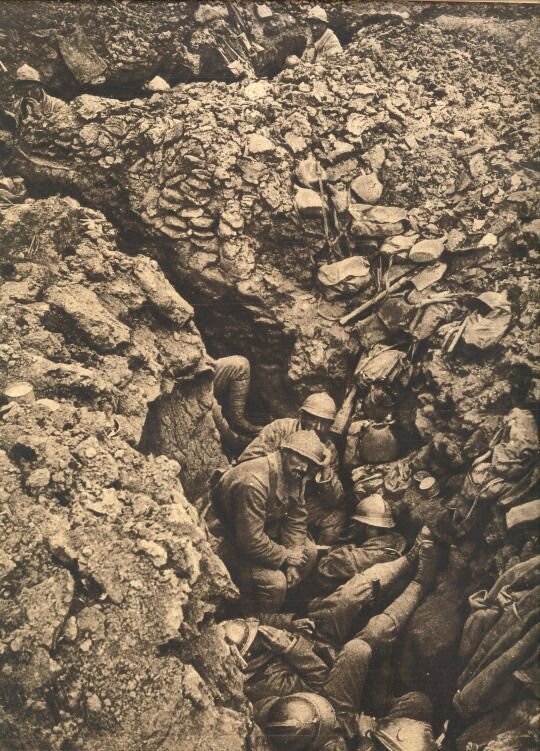


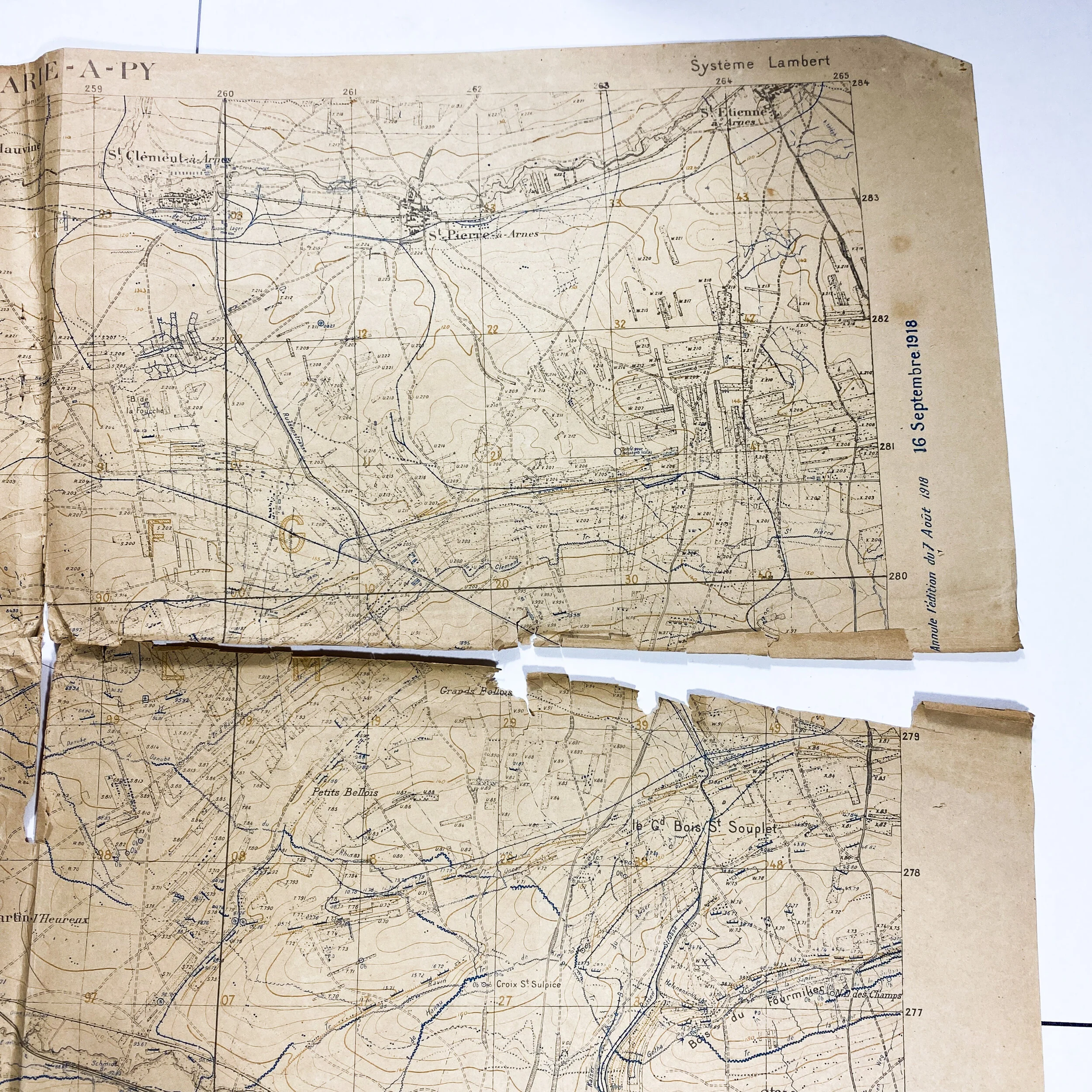



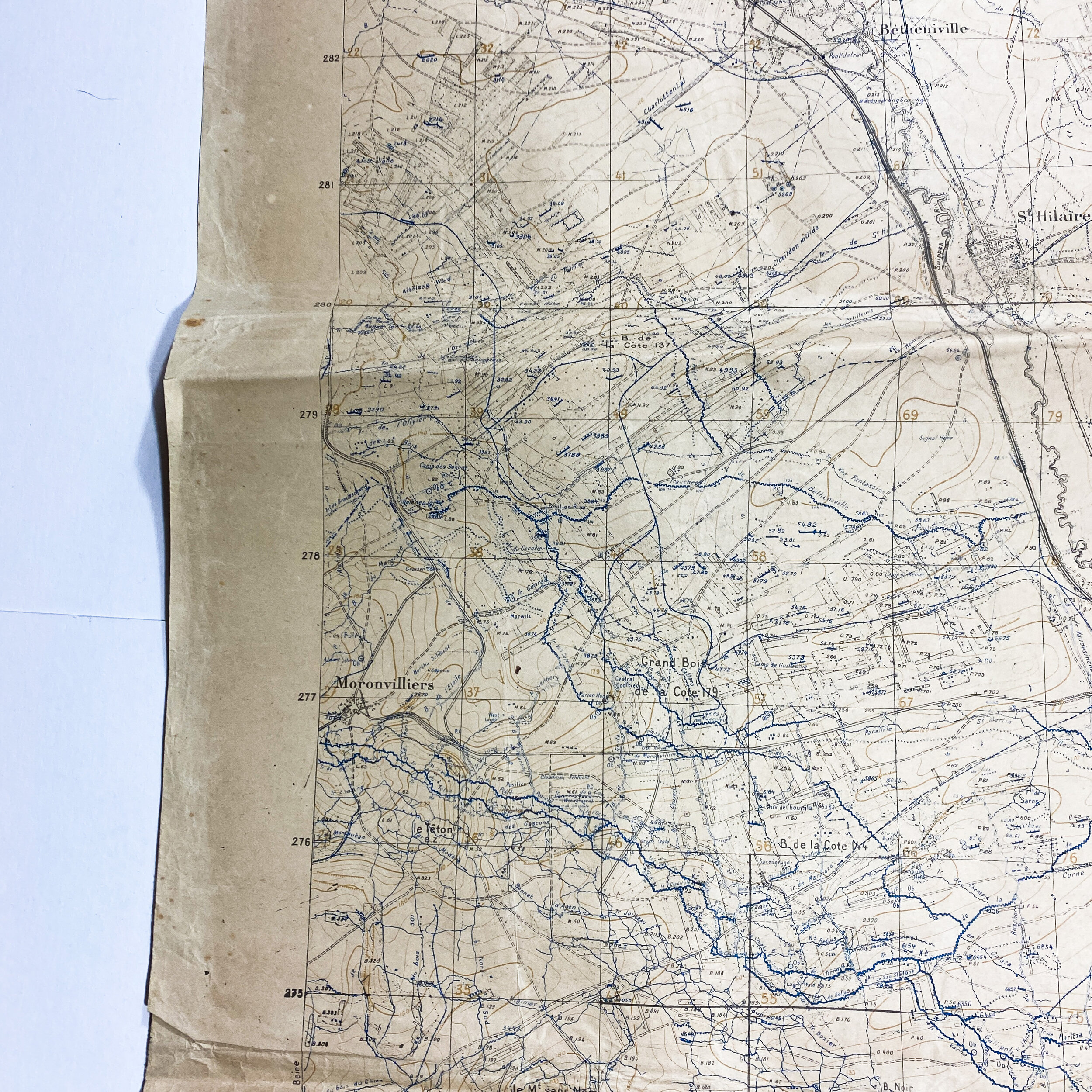

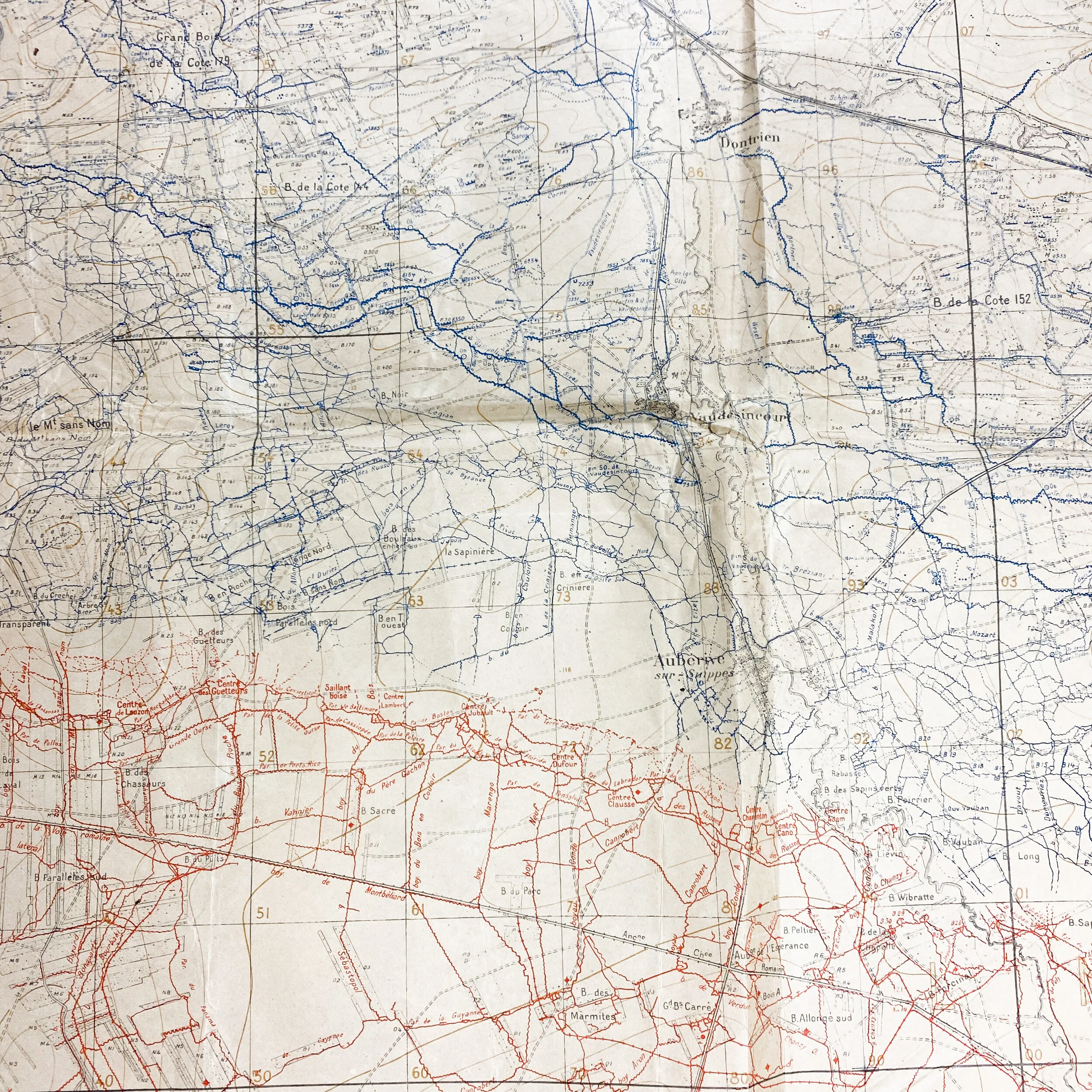
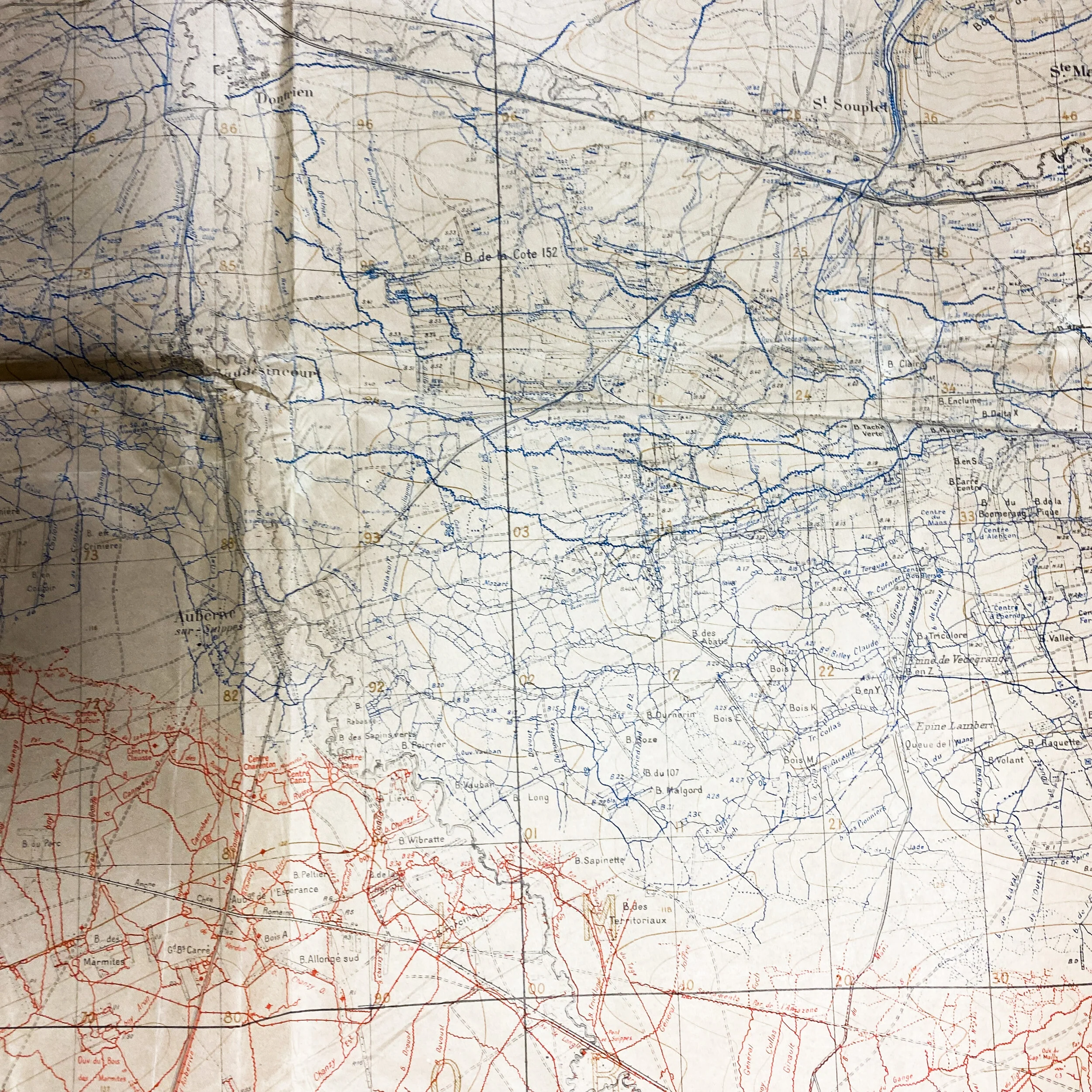

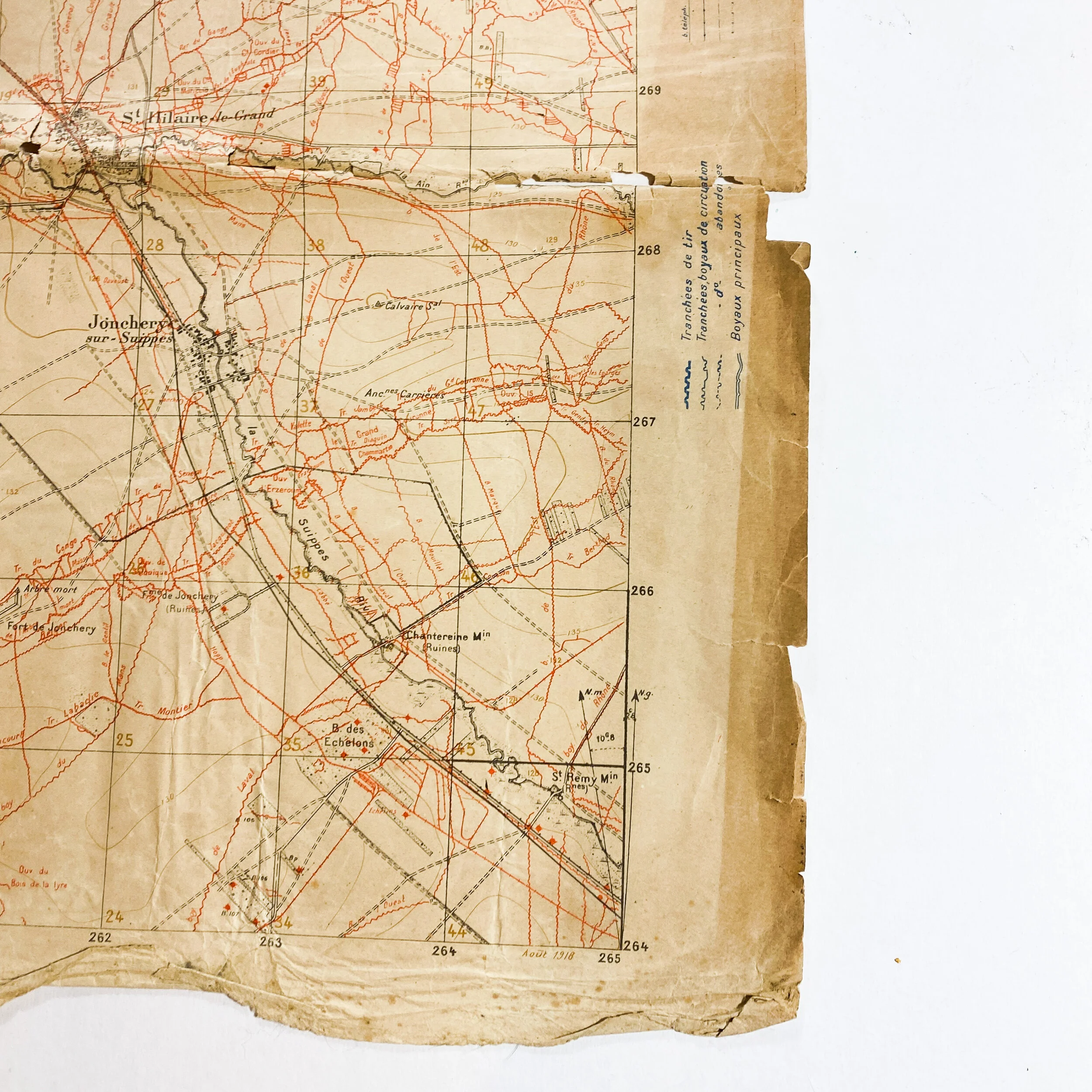
"SECRET" Marked September 1918 - Trench Map - Battle of the Hills - Third Battle of Champagne
Size: 30 x 40 inches
This World War 1 ‘SECRET’ French printed trench map is dated and updated as of “Septembre 16 1918” but is updated and revised to show the most updated trenches (in blue) as of the previous trench map August 7th of 1918. Titled “Ste Marie-A-Py”, this map shows the trenches and geographical landscape of the area held by Germans during The Battle of the Hills (French: Bataille des Monts) also known as the Battle of the Hills of Champagne and the Third Battle of Champagne. The French Fourth Army offensive against the German 4th Army was to support the Groupe d'armées du Nord (GAN, Northern Army Group) along the Chemin des Dames, in the Second Battle of the Aisne.General Anthoine, commander of the Fourth Army planned a supporting attack but this was rejected by Nivelle and Anthoine planned a frontal attack by two corps on an 11 km (6.8 mi) front, to break through the German defences on the first day and commence exploitation the following day. The battle took place east of Reims, between Prunay and Aubérive, in the province of Champagne, along the Moronvilliers Hills. This map would have been similar to those used in the planning of attack in the area, divisional movements, as well as artillery fire support.
The map itself shows the entire landscape of the battlefield and no mans land. The maps shows some of the most notable towns and villages in the area such as Moronvilliers, St. Hilarie, Auberive, Betheniville, Dontrien, St. Marie, and the famous Fort St. Hilaire.
Battle of the Hills:
The French spent 18 April consolidating and the 45th Division pushed up to the southern edge of Mont Haut. The "Monts" were held against a German counter-attack on 19 April, between Nauroy and Moronvilliers, by the 5th Division and 6th Division, which had been trained as Eingreifdivisionen (specialist counter-attack divisions), supported by the 23rd Division plus one regiment. Next day, the French 33rd Division captured Le Téton and the capture of Aubérive was completed by the 24th Division and the Territorial battalions. On 20 April, French troops got onto the summit of Le Casque and on 22 April, the eastern and lower summit of Mont Haut was secured by the 45th Division.
The Fourth Army took 3,550 prisoners and 27 guns. Counter-attacks by the German 4th Army on 27 May had temporary success, before the French recaptured ground around Mont Haut; lack of troops had forced the Germans into piecemeal attacks, instead of a simultaneous attack all along the front. The French attacked again from 17 to 22 April and despite German counter-attacks on 19 and 23 April, advanced slightly on the Heights of Moronvilliers. After a lull, the French attacked again on 30 April and ended the offensive on 20 May. The number of German prisoners taken by the end of the battle had been increased to 6,120, with 52 guns, 42 mortars and 103 machine-guns.
The Moronvilliers massif was a group of hills, densely wooded before 1914, to the west of the Suippes river. The village of Moronvilliers lay in a dip below the north crest of the main ridge.[c] There is an outlying peak known as Mont Sans Nom, 210 m (700 ft) high, with a hollow then a ridge to the north-west, the highest part of which is the western summit of Mont Haut at 260 m (840 ft). West of the ridge, which in 1917 was between the left flank of the French Fourth Army and the Fifth Army, was an area of low ground about 11 km (7 mi) wide, between the Moronvilliers massif and the Nogent l'Abbesse massif east of Reims, in which lay the village of Beine. A road ran east from Beine to Nauroy, Moronvilliers and St Martin l'Heureux on the Suippes, north of the Moronvilliers massif. The eastern slope declines close to the bank of the Suippes, between St Martin-l'Heureux and Aubérive and the southern slope declines south of the road from Reims to St Hilaire le Grand, St Ménéhould and Verdun as it descends into the Plain of Châlons. The highest point of Mont Haut is nearly as high as Vigie de Berru (270 m (870 ft), the highest hill overlooking Reims from the east. The capture of Mont Sans Nom and the Moronvilliers Ridge would threaten the German hold on the Beine basin and the Nogent l'Abbesse massif; the loss of these would make the German positions on the Fresne and Brimont heights untenable. The loss of Fort Brimont would make the German positions on the low ground south of the Aisne, from Berméricourt north-west to the mouth of the Suippes, vulnerable to another attack.
German 3rd Army counter-attacks:
After the defeats of 20 May, the Germans counter-attacked the next day and were repulsed. On 23 May, an assault on Mont Haut was stopped by artillery-fire and on 25 May, the French took more ground on both sides of Mont Cornillet and took 120 prisoners. At dawn on 2 May, German attacks began at Le Téton and the French positions further east and gained temporary footholds in the French positions, before counter-attacks forced the German infantry back. In the afternoon, a German attack on the summit of Le Casque and more attacks at dusk on Le Casque and Le Téton failed, as did an attempt at dawn on 28 May; a raid against the French on Mont Blond and a fresh attack on Mont Blond on 30 May, also failed. After a gas bombardment on Mont Blond and the French lines north-west of Aubérive, German infantry attacked again at 2:00 a.m. on 31 May, at Mont Haut, Le Casque and Le Téton. The German attacks continued all day and were eventually defeated in hand-to-hand fighting; some advanced posts north-east of Mont Haut were captured, until French counter-attacks managed to push the Germans back. By 3 June, Army Group German Crown Prince had recovered hardly any ground lost from 16 April to 20 May on the Aisne front and on the Moronvilliers Heights. German counter-attacks had mostly been costly failures and from 16 April to2 June, the Franco-British had taken c. 52,000 prisoners, 440 heavy and field guns, many trench mortars and more than 1,000 machine-guns.
Minor operations:
A surprise attack on 3 September, west of the St Hilaire–St Souplet road, caused considerable damage and several German prisoners were taken. Towards nightfall, French troops on a 0.80 km (0.5 mi) front, astride the Souain–Somme-Py road, entered the German lines and destroyed gas-tanks, blew up dugouts, rescued several French prisoners and returned safely with forty prisoners, four machine-guns and a trench mortar. More fighting took place on 5 September, at Le Teton and Le Casque. On 8 September, trench raiders to the east of the St Hilaire–St Souplet road, blew in dugouts and took twenty 20 prisoners. On 12 September, east of the St Hilaire–St Souplet road and north-east of Aubérive, more skirmishing took place. On 14 September, the French raided west of Navarin Farm and next day attacked in the area of Mt Haut. On 28 September, German raids were repulsed west of Navarin Farm, north-west of Tahure and at the Four-de-Paris in the Argonne. On 30 September, a raid was repulsed east of Aubérive, as the French were penetrating the German lines west of Mt Cornillet.
On 1 October, the French raided north of Ville-sur-Tourbe and on 3 October, attacked west of Navarin Farm and at Le Casque. On 7 October, the French repulsed an attack at Navarin Farm, and on 9 October, destroyed several dugouts near the Butte-de-Tahure. After a 36-hour bombardment on the night of 11/12 October, German storm-troops, in the Auberive–Souain area, attacked in three places and were eventually driven back. On 17 October, the Germans raided south-east of Juvincourt and on the northern slopes of Mt Cornillet; two days later the French raided north of Le Casque. On 22 October, the day before the Battle of La Malmaison, the French broke into the German lines south-east of St Quentin and in the Tahure region; on the morning of 23 October, German troops raided west of Hennericourt. On 24 October, French raids took place to the north-east of Prunay, at Mt Haut, north-west of Aubérive and near the Butte de Tahure. On 30 October, at the northern edge of the Moronvilliers heights, French troops raided east of Le Téton and repulsed two German counter-attacks but the third counter-attack recaptured the area.